Maui vs. Kauai: Which Hawaiian Island Is Better for You?
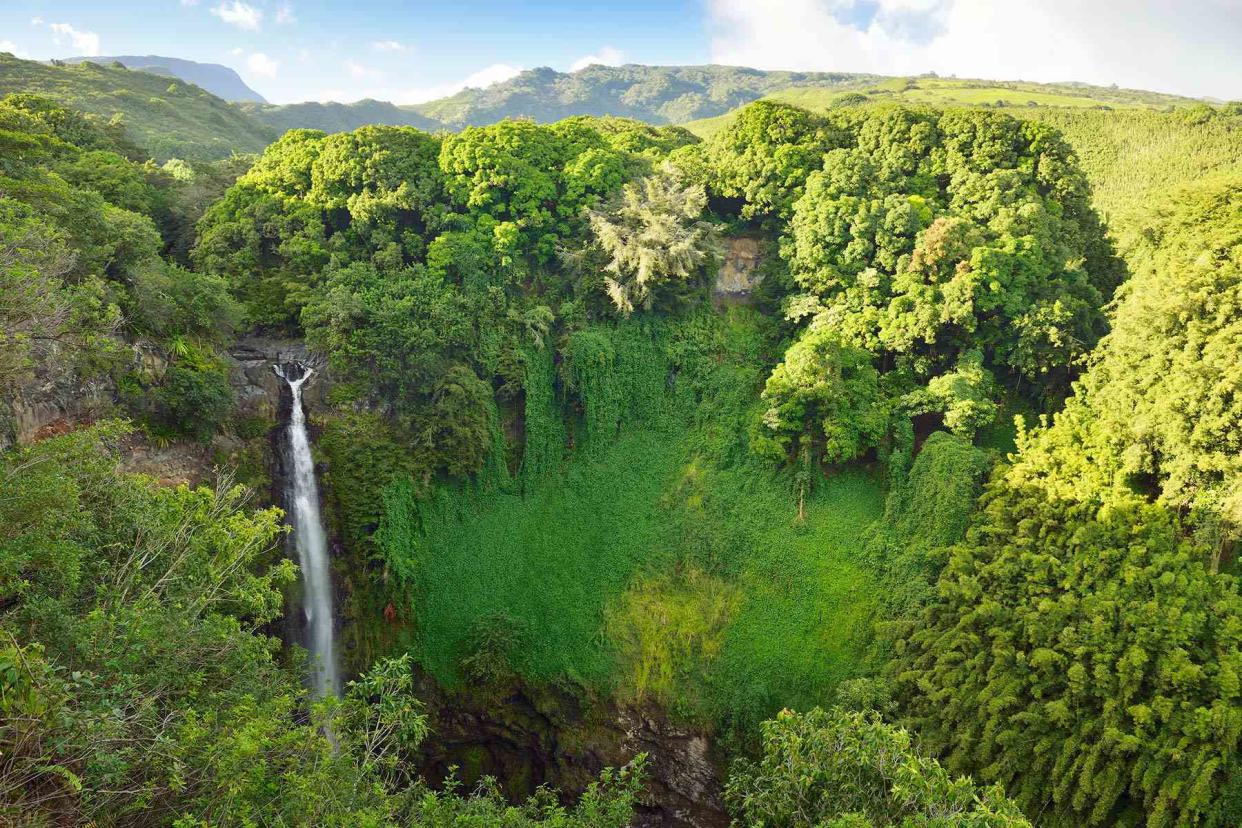
Westend61/Getty Images
If you’re heading to Hawaii, you’ll find gorgeous beaches, an abundance of hiking trails, fresh food, and opportunities to learn about culture and history, no matter which island you choose.
But each island does have its own distinct personality, and picking just one can be a challenge. If you’re trying to decide between Maui and Kauai, we've put together a guide to help you determine which island is best suited to you and your travel style — beyond the obvious sand, surf, and sun (and yes, plenty of mai tais) you’ll find throughout the state.
How to Travel to Maui and Kauai
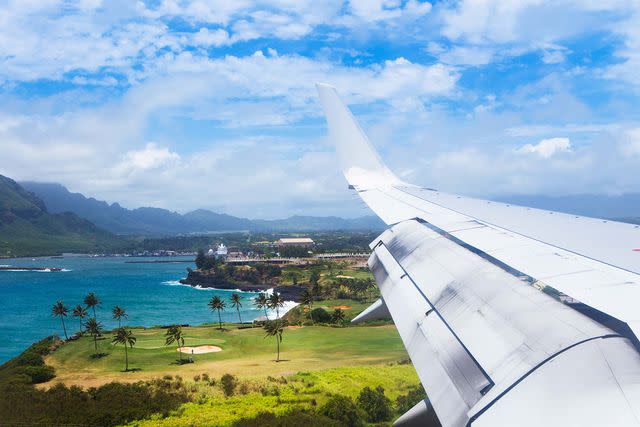
Matthew Micah Wright/Getty Images
Unless you’re a highly experienced sailor or planning to take a transpacific cruise, the only way to reach Hawaii’s remote archipelago from the continental U.S. is via airplane. According to Hawaii Visitors and Convention Bureau's analysis of Diio Mi air data, there are currently more than 120 direct flights each week to Lihue, Kauai, from a number of cities in the continental U.S., including Phoenix, Denver, Seattle, and Los Angeles, as well as four direct flights per week from Vancouver, Canada. You’ll have even more options if you’re heading to Maui: 316 direct flights travel each week from the continental U.S. to Kahului, Maui, and another 35 direct flights depart each week from Calgary, Edmonton, Toronto, and Vancouver, Canada.
Experiences on Maui and Kauai
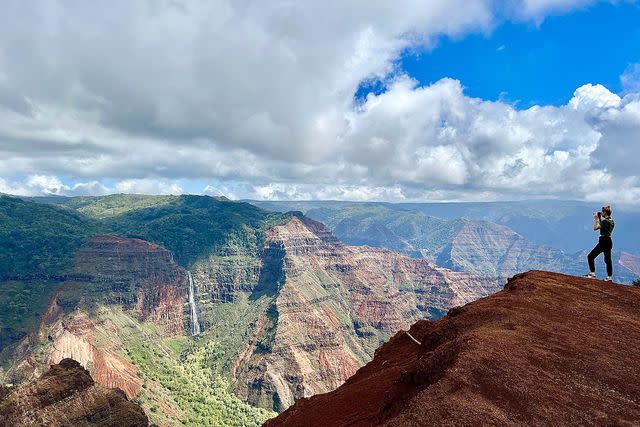
Sunny Fitzgerald
A trip to any Hawaiian island is bound to be memorable, but you’ll find that some of the extra-special experiences and incredible views — the kind that will have you pinching yourself, wondering if you’re dreaming — are unique to each destination.
On Maui, sit above the clouds and watch the sunrise at 10,000 feet atop Haleakalā, a sacred site and dormant volcano that covers more than 75 percent of the island and is home to 100-plus endangered species, including Hawaii’s state bird, the nene. You’ll start the journey up the steep and winding road in the wee hours, but it’s well worth the early alarm. And if you’d rather not drive yourself (Haleakalā Highway holds the world record for highest elevation climb in the shortest distance, after all), you can book a small group tour with a local operator like Skyline Hawaii. Or, you can visit this sacred summit at sunset and stay for some stargazing.
If you’re a hiker, you’ll appreciate a visit to Kauai. Explore one of the many trails in Waimea Canyon State Park, the “Grand Canyon of the Pacific,” where you’ll see colorful views and geological formations unlike anything else in the state.
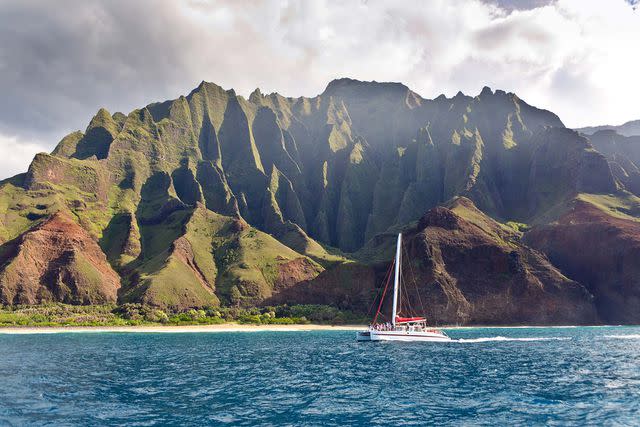
YinYang/Getty Images
Experienced hikers can also tackle the Kalalau Trail along the rugged Nā Pali Coast of Kauai, so named for its 4,000-foot sea cliffs. This is one of the most beautiful (and also one of the most dangerous) trails in the U.S., so it requires a certain level of fitness and preparation. You'll also need a day-use or camping permit, depending on whether you're trekking a section or overnighting. A limited number of permits are issued per day, so plan in advance. Fortunately, this challenging trail is not the only option for seeing some of Kauai's best views. Book a private guided hike or driving tour with Kauai Hiking Tours (options include Waimea Canyon and Koke'e State Park) for a chance to not only reach some spectacular viewpoints, but also learn about the environment and history from your knowledgable guide.
Weather on Maui and Kauai
In general, Hawaii has two seasons: summer (May to October) and winter (November to April). Daytime temperatures average around 85 degrees Fahrenheit in the summer and around 78 degrees Fahrenheit in the winter. The islands receive more rain in the winter months, which can cause flooding, road closures, and low visibility (potentially impacting views at Waimea Canyon on Kauai and Haleakalā on Maui, for example), and the temperature may dip lower, especially at higher elevations. Given the microclimates here, even within each island, you'll find that the weather can vary.
Kauai is considered one of the rainiest places on the planet. Of course, that’s one of the reasons it’s also so lush. You can often find sunshine on the southern side, but it’s not guaranteed, especially in the winter.
Maui receives less rainfall than Kauai. The leeward side, including Ka’anapali, Lahaina, Kihei, Kapalua, and Wailea, is typically drier, while the windward side, where Iao Valley and Hana are located, tends to be wetter.
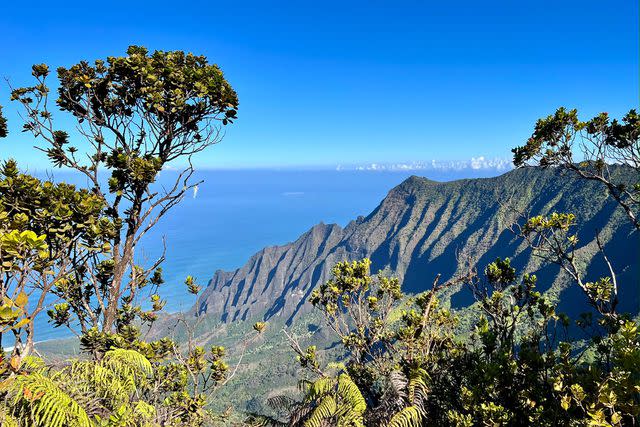
Sunny Fitzgerald
That said, the weather isn’t always what you might expect. On my most recent trip to Kauai and Maui, I experienced the sunniest day at Wai’ale’ale — known as one of the wettest spots in the world — then had high winds and several days of rain on Maui.
Be flexible and have a backup plan; a spa treatment that incorporates local ingredients and Hawaiian techniques is a great way to brighten up a dreary day. Try the lomilomi massage in an open-air room at The Hi’ilani Spa on Kauai or in an oceanside hale (thatched hut or house) at the Four Seasons Resort Maui at Wailea.
Water Activities on Maui and Kauai
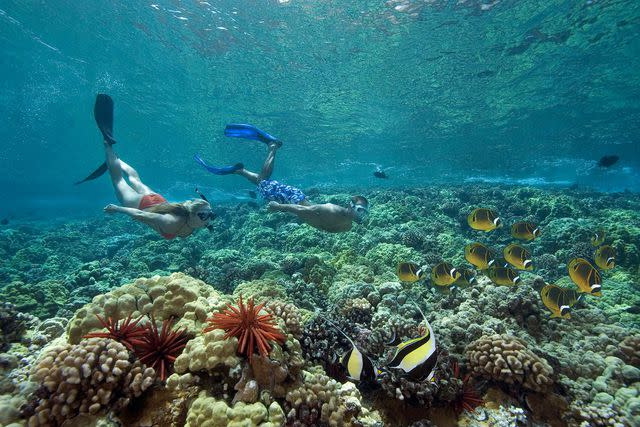
VW Pics/Getty Images
Maui’s beaches are arguably more easily accessible than Kauai’s, with water that tends to be calmer. But being surrounded by water means plenty of opportunities on both islands for ocean activities such as surfing, snorkeling, diving, and outrigger canoe paddling (if you want to take your paddling to the next level, book a three-day intensive training at Kukui’ula on Kauai).
Each island also offers the chance to submerge yourself in something unexpected. Kauai is the only island in Hawaii with navigable rivers, so it's the place for river kayaking. Cruise to a waterfall swimming hole in Wailua River State Park, or enjoy bird-watching while on a peaceful paddle as you pass taro fields along the Hanalei River.
Meanwhile, just three miles off Maui’s coast lies Molokini, a partially submerged volcanic crater and Hawaii’s only island marine sanctuary. Here, the islet's crescent shape offers protection from wind and surf, so you’ll typically find calm waters — with clarity of about 100 feet and sometimes up to 150 feet — that are ideal for snorkeling and diving. You can also see a variety of fish, many of which are endemic to Hawaii. And if you’re lucky, you may even spot a whale shark.
Cultural Experiences on Maui and Kauai
Both Kauai and Maui offer a variety of ways to learn about Hawaiian culture, and each island has something unique to share.
Learn the concept of malama ‘aina (caring for the land) by doing it: Join Maui Cultural Lands for a Saturday volunteer experience, and work alongside residents to remove invasive species and plant native ones.
See what happens behind the scenes of hula at the Four Seasons Resort Maui at Wailea — the only place in Hawaii where you can observe a hula hālau (school or group) practicing for the highly competitive Merrie Monarch Festival. This sneak peek is not a performance like you might see at a luau; it’s a practice session led by kumu hula (hula instructor) Kamaka Kukona. Guests can pop in and watch for a few minutes or for the full two hours.
If you’re staying at Kā‘anapali Beach Hotel on Maui, sign up for Native Hawaiian-led cultural workshops that include ‘ōlelo Hawaii (Hawaiian language), storytelling, ukulele lessons, and more.
On the southern coast of Kauai, follow the Koloa Heritage Trail, a 10-mile, 14-stop tour of cultural, geological, and historical sites, from Spouting Horn Park to Koloa Missionary Church.
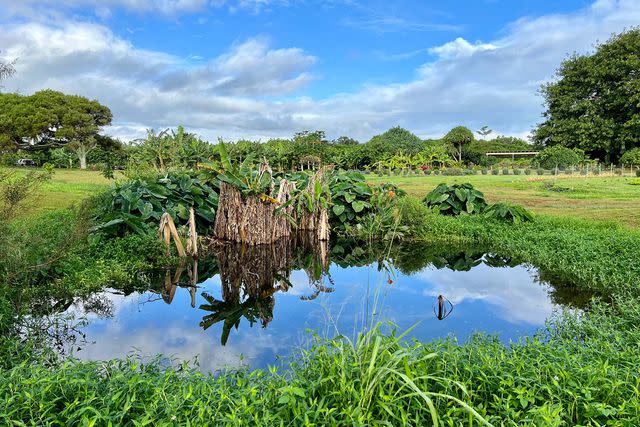
Sunny Fitzgerald
Guests of Timbers Kauai can learn about — and nibble on — some of Hawaii’s plants, fruits, and vegetables while learning of their cultural significance on a farm tour. Early risers at Timbers can embark on a wildlife tour with naturalist guide Alan Silva for an opportunity to spot a variety of species (including the endangered nene) that have increased in population thanks to conservation efforts.
Nightlife on Maui and Kauai
Sometimes, people joke that Kauai shuts down by 9 p.m. There’s some truth to that; a lot of places close early, making Kauai well-suited to families with young children, travelers looking for rest and relaxation, couples interested in a romantic escape, and solo travelers seeking a peaceful spot for solitude and introspection.
If you’re craving a bit more social interaction or a night out while on Kauai, you can base yourself at a hotel in one of the more populated areas such as Ko’a Kea Resort in Poipu. Red Salt, the on-site restaurant, is the perfect place to celebrate a special occasion with locally sourced ingredients, high-quality sushi, and sparkling sake.
You’ll also find live music at a number of venues on the island, including Duke’s in Lihue and Tahiti Nui in Hanalei. There are late-night cocktails at Stevenson’s Library in Koloa (OK, late for Kauaii — sushi stops at 10 p.m. and the bar closes at 11 p.m.). You can join trivia on Thursday nights at Rob’s Good Times Grill in Lihue, or drink locally brewed beers at the island’s oldest pub, Kauai Island Brewing Company, in Port Allen.
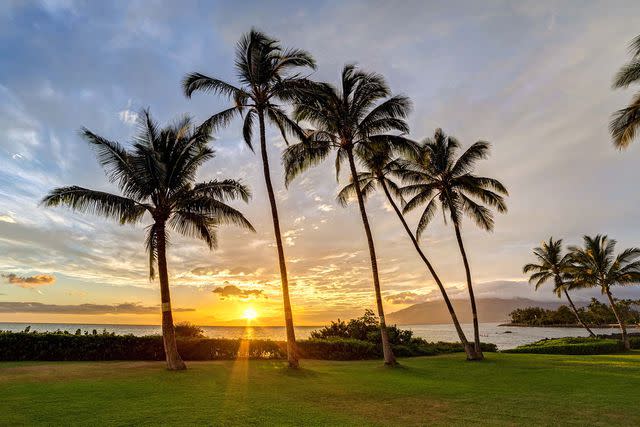
P_L_photography/Getty Images
If you’re looking to mingle, you’ll have more options and later hours of operation on Maui. Possibilities include a happy hour at the no-frills Sly Mongoose in Lahaina, karaoke at Haui’s Life’s a Beach (also considered one of the best sunset cocktail spots) in Kihei or Sansei in Kihei and Kapalua, late-night dancing and craft cocktails at Vibe Bar Maui in Kihei, and more.
Day Trips From Maui and Kauai
Even if you choose to spend your vacation on one island, you can create a mini multi-island trip — no extra flight required.
From Maui, take the ferry to Lanai and experience a slower pace of life. If you’re traveling during the winter, the ferry ride may double as a whale-watching trip — humpbacks typically migrate through Hawaii from November through March, so you might spot some en route. You can visit Lanai as a day trip, but consider spending at least one night on the island to allow time to experience the old town, take a hike, and try some Love Lanai Native Hawaiian-led cultural activities such as oli (chants), traditional fishing, and hula.
From Kauai, join Holo Holo Charters on an excursion near Niihau. You won’t be able to step ashore — it's the “forbidden island,” after all — but you can snorkel at Lehua Crater near Niihau. This tour also takes you along the Nā Pali Coast, so it’s an opportunity to see Kauai’s majestic coastal cliffs, waterfalls, and sea caves (and possibly some wildlife such as turtles, dolphins, and monk seals).
For more Travel & Leisure news, make sure to sign up for our newsletter!
Read the original article on Travel & Leisure.

